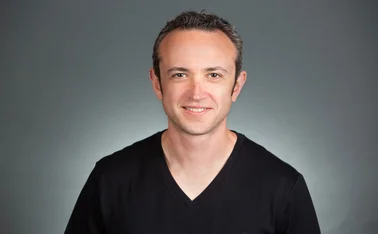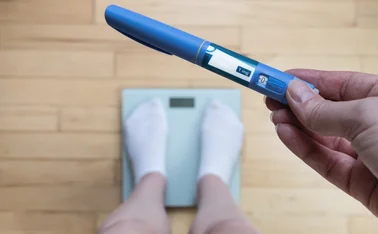
Analysis: Grenfell – Putting rehabilitation outside litigation

Need to know
- Residents had raised fire concerns four years earlier
- Survivors facing bereavement and complex post-traumatic stress disorder
- The remit was to include anyone in the tower on the night, any resident of the tower, any residents of the walkways around the tower and any immediate relatives of any of those people
- The more unusual treatments have included hypnotherapy, gym memberships, supporting a youth group and helping with a five-a-side football week on weekends
Almost two years on from the horrific fire at Grenfell Tower, with the inquiry ongoing, are survivors getting the help they need?
On 14 June 2017 London stood still as a fire that started on the fourth floor in the residential tower block Grenfell Tower spread with ferocious speed and killed 72 people.
Residents had raised fire concerns four years previously saying “only a catastrophic event” would expose the inadequacy of fire safety systems at the 24-storey building.
The next day little known Norweigan company Protector Forsikring confirmed it was on cover for the building insurance and it later emerged it had only taken over cover on 1 April 2017. To date it has paid out £24.5m to building owner Kensington and Chelsea Borough Council with final losses expected to reach £75m and be absorbed by its reinsurer, which Post understands to be Munich Re.
In what might be seen as an unusual move, however, the insurer also set up a rehabilitation service for survivors of the tragedy.
Phil Anstee, claims technical lead at Protector, said: “It was an extremely challenging situation immediately after the fire. We were faced with bereaved, survivors and relatives of both of those. More than 1600 people sought medical treatment through the NHS. It did a very good job and has been complimented for the services provided. But it was felt this was not for everyone and, therefore, we were looking at whether we could do something to assist the victims of the fire.”
Sue Balnaves, one of Corporé’s case managers for Grenfell, echoed the support for the first responders: “Some families had been separated, many had only the clothes they were wearing, they had no food, keys, school uniform. It was a shock – this wasn’t a war zone but a normal community. The public were amazing bringing clothes and food. The community really came together.”
Cynics might say this rehabilitation service was provided to limit the cost of the claim but Anstee made it clear that the rehabilitation provision in no way links to the liability side of the case: “We felt that it was the right thing to do because RBKC was the owner of the building and we were the insurer. The goal is to get people able to live their lives again as best they can. It is possible people don’t even know which the insurer is – we just wanted to make sure they received the treatment they need.”
Beyond the normal rehabilitation
Corporé has encountered a wide range of psychological conditions including:
- Grief
- Complex bereavement
- Post-traumatic stress disorder
- Suicidal ideation
- Eating disorders
- Drug and alcohol abuse
In addition there have been musculoskeletal injuries incurred trying to exit the tower and smoke inhalation.
Corporé has treated these conditions through a combination of:
- Physiotherapy and orthopaedic consultations for physical injuries
- Respiratory rehabilitation for those affected with smoke inhalation
- Organising initiatives for children so as not to over-medicalise the care and integrate children into communities such as sports therapy, football team, boxing, music therapy, homework clubs, community mentor programme and dedicated youth workers.
- Tutoring and close liaison with schools
- For those serving custodial sentences, it has navigated the complex prison system, facilitating treatment through their services
- Vocational and return to work support including training
- Residential rehabilitation for those with drug and alcohol abuse
- Domestic function services for those with cognitive disorders.
All these activities were provided while managing a series of non-clinical challenges, including housing issues, displacement, work, family and the diverse cultural needs and language barriers of those affected.
Mark Stirrup, managing director of Corporé, which was brought in to develop and manage the solution echoed this: “What was described to us by the insurer, Protector, was to do something different from other insurers and provide a service outside of the litigation process. There was no discussion about liability but a desire to provide a very high quality of rehabilitation service to eligible parties associated with Grenfell. This instruction came all the way from Oslo [Protector HQ].”
A service like this had never been seen before on this scale in the UK, so those involved had to start from scratch. Anstee explained the starting point: “As the council’s tri-borough team handles the insurance claims we decided it would be the first point of contact and communicate the approach for rehabilitation.”
Protector then looked for a partner to help run the service and Corporé and two other firms were selected and had to develop a suitable solution. Emma Thomson, head of operations at Corporé, explained: “In normal situations, immediately after a major incident, we set up a dedicated phone line and mobilise the team within 24 hours, and then enter a period of watchful waiting. Due to the nature of the Grenfell Tower fire, we revised our approach as there was a clear need and desire for face-to-face assessments instead of telephone consultations. We also included the ability to get survivors straight into psychological treatment quickly and in parallel with the initial needs assessment process.”
Dr Lambert-Simpson, forensic psychologist and Corporé clinical lead, said: “There were two things going on: bereavement and what we would consider complex post-traumatic stress disorder. Complex PTSD requires a different kind of treatment to regular PTSD. There were various physical injuries, including smoke inhalation, but almost every case needed psychological help. The first thing we did for serious cases was get them in front of a psychologist and a psychiatrist. Starting out we didn’t know how much we would use them and it turned out to be significant.”
Grenfell Tower funding: in numbers
£12m
£12m ongoing costs for RBKC for 2019/2020
£200m
£200m funding from Department of Housing to replace unsafe cladding type on residential blocks
£46m
£46m of national government funds
£34m
Committed a further £34m to help meet rehousing costs, deliver new mental health services and deliver improvements to the Lancaster West Estate
300
The council has acquired over 300 homes in and around the borough
203
203 households needed new homes. 198 accepted permanent or temporary accommodation
Source: Statement by the Rt Hon James Brokenshire MP, Secretary of State for Housing, Communities and Local Government; Royal Borough of Kensington and Chelsea – www.gov.uk/government/speeches/grenfell-one-year-on
Stirrup echoed this: “We have broken our normal model, with Protector’s support, in terms of doing what needs to be done and that has meant costs of provision have risen. The outcome is not different it just makes it more personal. This is a holistic solution and there are no constraints on our normal service. We have a free rein to decide what we need to do but we do report back on a monthly basis in terms of cases.
“The remit was to include anyone in the tower on the night, any resident of the tower (whether present on the night or not), any residents of the walkways around the tower and any immediate relatives of any of those people. “
Cost and communication
Stirrup added that costs hasn’t been a restriction on the service: “We haven’t been challenged at all about any recommendations we have made because of cost. It has been very generous in terms of whatever people need and there is some really quite expensive psychological treatment it has been prepared to pay.
“When we first took the rehabilitation on we were told of a projected end point but it was in the multiple years and just a starting point. In the grand scale of the overall claim the rehabilitationcosts, although not limited, won’t be significant.”
With the system set up it was important to let people know they could access it, so RBKC wrote to everyone it was aware of and held meetings to explain the service.
But Lambert-Simpson said uptake was initially slow: “Getting lawyers and clients to engage in our service was quite difficult. A lot of the time you would get a referral to one member of the family and then when you went to see them and they saw what you were doing, then they would refer the rest of the family to you. That happened quite a lot. It became word of mouth.”
Talking point
155
Total cases
118
Cases open
37
Cases closed
26
New cases in March
3000
Hours of cases management
10
Hours allowed for initial needs assessment
2021
Predicted close dates June 2021
71
The oldest victim treated was 71
7
The youngest victim treated was seven
Treatments included:
- psychiatric
- physiological
- music therapy
- play therapy
- gym membership
- tutors
Then as the cases arrived there were many other challenges to overcome. Lambert-Simpson explained: “People were displaced and in hotels. They had no access to money – we arranged travel cards, for example, where needed.”
Balnaves added: “We were dealing with a community and not just individuals. These people had played football together and gone out together. Suddenly they were living in hotels, they had no kitchen and there were things beyond the psychology like rapidly putting on weight and becoming unmotivated to continue. A simple but unusual act here was to provide gym membership for some claimants.
“There was a language barrier in some cases and we had to get a Farsi speaker in. But it wasn’t just the language it was making sure what we were proposing met with their cultural needs as well.”
Thomson added: “There were also large family groups. With other trauma incidents it is normally one person exposed to the incident. One case with Grenfell has five or six family members and another where there are about 20 people who are connected in some way.”
To cover the demand Corporé had to recruit more case managers in West London and in the south east with a background in trauma to help.
Lambert-Simpson said training was crucial here: “Anyone who came on board came into training and then was shadowed by a second manager. In RBKC and in the NHS there was a lot of burn out. For RBKC the last original case manager left just before December 2018. It was like something none of us had ever seen before.”
Balnaves echoed this: “Staff have heard some harrowing and terrible stories. We have had weekly calls to talk over cases. Many cases also needed more regular contact so case managers were needed to be local. Where possible the person who made the initial contact is kept on the case for continuity.”
One major positive for Balnaves was that case managers were able to think outside the box and as long as they could justify the treatment they were given the go ahead for some more unusual treatments: “There were a lot of children and you can’t just get them to sit and talk to a therapist so we had to think of solutions such as music therapy and play therapy. Children lost out on schooling and we provided extra tuition. We have also provided group and family therapy.
“The more unusual proposals the case managers have put forward have included hypnotherapy, gym memberships, supporting a youth group and helping with a five-a-side football week on weekends.”
Referrals still coming
Almost two years on, Thomson said the service is still getting referrals: “We’ve had a recent uptake in the service. It could be some people feel more emotionally ready to deal with it now as phase one of the Inquiry is finished. Or some people don’t have closure or they still need help. Others may have thought they could cope and now realise they can’t. In some cases the longer they have left it the more therapy they might actually need.”
Despite its availability it’s a sad truth that many more survivors have not accessed the system yet. It could be that this has to be with the litigation side of the case. The legal profession might be hesitant about a new service outside of the litigation process even two years on – a private health service on NHS terms – for free. But the fact is it will not affect any compensation or any victims’ rights they might have.
Lambert-Simpson added that there is a widespread myth that there is no money for the survivors: “Rapper Stormzy posted something online and I contacted him and told him he wasn’t speaking the truth. Treatment is there they just need to choose to access it.”
Within the legal system when courts are looking at damage they might assess what treatment survivors have accessed and for those who have accessed nothing they may believe that no treatment was necessary.
Lambert-Simpson added: “The saddest thing of all is that there is still a lot of money left but we haven’t received all of the referrals we should have.”
There is still work to do with the Grenfell survivors but Stirrup hoped in the future the industry might be more prepared to bring in rehabilitation as standard in major claims: “If there is a likelihood that liability is going to be admitted by the defendant insurer then the claimant lawyer should allow it to provide a high level of rehabilitation services as soon as possible.
“The injured party should be at the heart of the issue. We are increasingly talking to insurance customers about providing a service where you can press a button to say this is one of ours and we want a rehabilitation team mobilised to offer this service very quickly.”
Only users who have a paid subscription or are part of a corporate subscription are able to print or copy content.
To access these options, along with all other subscription benefits, please contact info@postonline.co.uk or view our subscription options here: http://subscriptions.postonline.co.uk/subscribe
You are currently unable to print this content. Please contact info@postonline.co.uk to find out more.
You are currently unable to copy this content. Please contact info@postonline.co.uk to find out more.
Copyright Infopro Digital Limited. All rights reserved.
As outlined in our terms and conditions, https://www.infopro-digital.com/terms-and-conditions/subscriptions/ (point 2.4), printing is limited to a single copy.
If you would like to purchase additional rights please email info@postonline.co.uk
Copyright Infopro Digital Limited. All rights reserved.
You may share this content using our article tools. As outlined in our terms and conditions, https://www.infopro-digital.com/terms-and-conditions/subscriptions/ (clause 2.4), an Authorised User may only make one copy of the materials for their own personal use. You must also comply with the restrictions in clause 2.5.
If you would like to purchase additional rights please email info@postonline.co.uk








